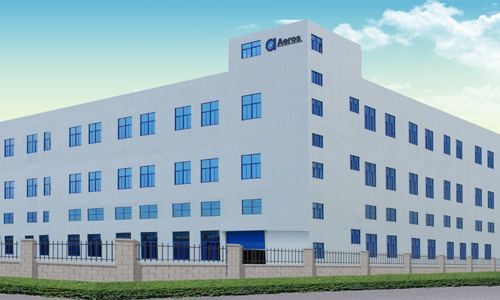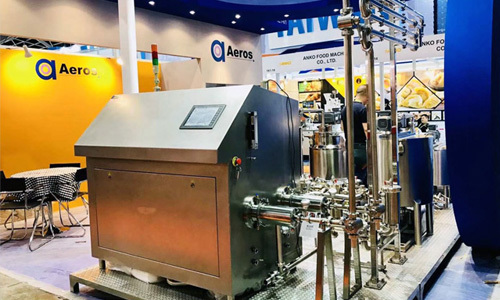Unlocking Efficiency: The Role of Continuous Aeration Machines in Wastewater Treatment

2024/11/10
Unlocking Efficiency: The Role of Continuous Aeration Machines in Wastewater Treatment
Table of Contents
- 1. Introduction to Wastewater Treatment and Aeration
- 2. The Importance of Aeration in Wastewater Treatment
- 3. What are Continuous Aeration Machines?
- 4. Types of Continuous Aeration Systems
- 5. Benefits of Continuous Aeration Machines
- 6. Optimizing Efficiency with Continuous Aeration
- 7. Technological Advancements in Aeration Machines
- 8. The Future of Wastewater Treatment with Continuous Aeration
- 9. FAQs about Continuous Aeration Machines
- 10. Conclusion
1. Introduction to Wastewater Treatment and Aeration
In the realm of **wastewater treatment**, effective management of contaminants is crucial. Wastewater treatment aims to remove impurities and pollutants from water before it is released back into the environment or reused. Among the various processes involved, **aeration** plays a pivotal role, especially in biological treatment systems.
**Aeration** allows for the introduction of oxygen into the wastewater, promoting the growth of aerobic bacteria that degrade organic matter. This process not only helps in removing pollutants but also is vital for maintaining the overall health of the aquatic ecosystem.
2. The Importance of Aeration in Wastewater Treatment
Aeration is fundamental for several reasons:
- **Promotes Biological Activity**: Aerobic bacteria need oxygen to thrive. Adequate aeration supports the metabolic processes of these microorganisms, which break down organic materials.
- **Reduces Odors**: Proper aeration minimizes the production of foul odors that can arise from anaerobic conditions. By ensuring sufficient oxygen levels, unpleasant smells can be significantly reduced.
- **Enhances Treatment Efficiency**: Effective aeration can lead to quicker treatment cycles, thus improving the overall efficiency of the wastewater treatment system.
- **Maintains Ecosystem Balance**: Properly aerated water supports a balanced ecosystem, which is vital for aquatic life both in treatment facilities and downstream environments.
3. What are Continuous Aeration Machines?
**Continuous aeration machines** are specialized equipment designed to maintain a steady supply of oxygen in wastewater treatment systems. Unlike batch aeration methods, where oxygen is supplied intermittently, continuous aeration provides a constant stream of air, ensuring the microorganisms have an uninterrupted supply of oxygen.
These machines utilize various mechanisms, such as blowers and diffusers, to introduce air into the water effectively. By ensuring consistent aeration, these machines enhance the biological treatment process, leading to improved treatment outcomes.
4. Types of Continuous Aeration Systems
Understanding the different types of continuous aeration systems is essential for optimizing wastewater treatment processes. The common types include:
4.1. Diffused Aeration Systems
**Diffused aeration systems** are among the most widely used methods. They involve the use of air diffusers placed at the bottom of the treatment tank. Air is introduced into the tank through these diffusers, creating fine bubbles that maximize oxygen transfer to the water.
4.2. Mechanical Aeration Systems
**Mechanical aeration systems** use mechanical devices such as paddle wheels or surface aerators to agitate the water surface and introduce oxygen. These systems are particularly effective for smaller treatment facilities and ponds.
4.3. Aspirated Aeration Systems
**Aspirated aeration systems** combine mechanical and diffused aeration methods. They utilize a mechanical device to draw air into the water, ensuring effective mixing and oxygen transfer.
5. Benefits of Continuous Aeration Machines
Continuous aeration machines offer several benefits that contribute to improved wastewater treatment:
5.1. Improved Treatment Efficiency
By providing a constant supply of oxygen, continuous aeration machines enhance the efficiency of the biological treatment process. This leads to faster decomposition of organic matter and better overall treatment results.
5.2. Reduced Operational Costs
With optimized aeration, facilities can operate more efficiently, leading to lower energy consumption and operational costs. This efficiency translates into significant savings over time.
5.3. Enhanced Environmental Compliance
Continuous aeration systems help treatment facilities meet environmental regulations by ensuring effective pollutant removal. This compliance is essential for protecting local ecosystems and public health.
5.4. Easier Maintenance and Operation
Modern continuous aeration machines are designed for ease of use, requiring less frequent maintenance and allowing for automated operation. This convenience reduces the labor intensity associated with wastewater treatment.
6. Optimizing Efficiency with Continuous Aeration
To maximize the efficiency of continuous aeration machines, several strategies can be employed:
6.1. Regular Monitoring and Maintenance
Routine checks and maintenance of aeration equipment are crucial to ensure optimal performance. This includes inspecting blowers, diffusers, and mechanical parts to prevent breakdowns.
6.2. Adjusting Aeration Rates
Adjusting the aeration rate based on the specific needs of the treatment process can lead to improved efficiency. Monitoring oxygen levels and identifying the optimum rate for particular conditions are essential.
6.3. Implementing Control Technologies
Utilizing advanced control technologies can enhance the performance of continuous aeration systems. Automated systems can adjust aeration rates in real-time based on the biochemical oxygen demand (BOD) of the wastewater.
7. Technological Advancements in Aeration Machines
The wastewater treatment industry continues to evolve, and continuous aeration machines are no exception. Recent advancements include:
7.1. Energy-Efficient Blowers
Modern blowers are designed to be more energy-efficient, reducing the overall energy requirements of aeration systems. This technology helps facilities lower operational costs while maintaining performance.
7.2. Smart Aeration Systems
Innovative smart aeration systems utilize sensors and data analytics to optimize aeration in real-time. These systems can adjust to changing conditions, ensuring that oxygen levels are always at their peak.
7.3. Advanced Diffuser Technology
New diffuser designs enhance oxygen transfer efficiency, allowing for better performance even in challenging conditions. These advancements contribute to improved treatment outcomes.
8. The Future of Wastewater Treatment with Continuous Aeration
The future of wastewater treatment is promising, with continuous aeration machines at the forefront of innovation. As regulations become stricter and the demand for sustainable practices increases, these machines will play a vital role in achieving efficient and compliant treatment processes.
Innovations in technology and a focus on energy efficiency will shape the growth of continuous aeration systems. Facilities that adopt these advancements will not only improve their treatment efficiency but also contribute positively to environmental sustainability.
9. FAQs about Continuous Aeration Machines
9.1. What is the main purpose of continuous aeration machines?
The primary purpose of continuous aeration machines is to supply a constant stream of oxygen to wastewater, promoting the growth of aerobic bacteria that break down organic matter.
9.2. How do continuous aeration machines compare to batch systems?
Continuous aeration machines provide a steady supply of oxygen, improving treatment efficiency and reducing operational costs compared to batch systems, which supply oxygen intermittently.
9.3. What are the maintenance requirements for continuous aeration systems?
Regular monitoring, inspection, and maintenance of blowers, diffusers, and mechanical parts are essential to ensure optimal performance and longevity of continuous aeration machines.
9.4. Can continuous aeration systems help with odor control?
Yes, by maintaining aerobic conditions, continuous aeration systems can significantly reduce the production of foul odors associated with anaerobic conditions.
9.5. What advancements are being made in aeration technology?
Recent advancements include energy-efficient blowers, smart aeration systems that utilize real-time data, and advanced diffuser technology that enhances oxygen transfer efficiency.
10. Conclusion
Continuous aeration machines are indispensable tools in modern wastewater treatment. Their role in enhancing treatment efficiency, reducing operational costs, and promoting environmental compliance cannot be overstated. As technology continues to advance, these machines will evolve, offering even greater benefits to treatment facilities. By investing in continuous aeration systems, operators not only optimize their processes but also contribute to a healthier environment for future generations.
Continuous aeration machine
Previous Page







